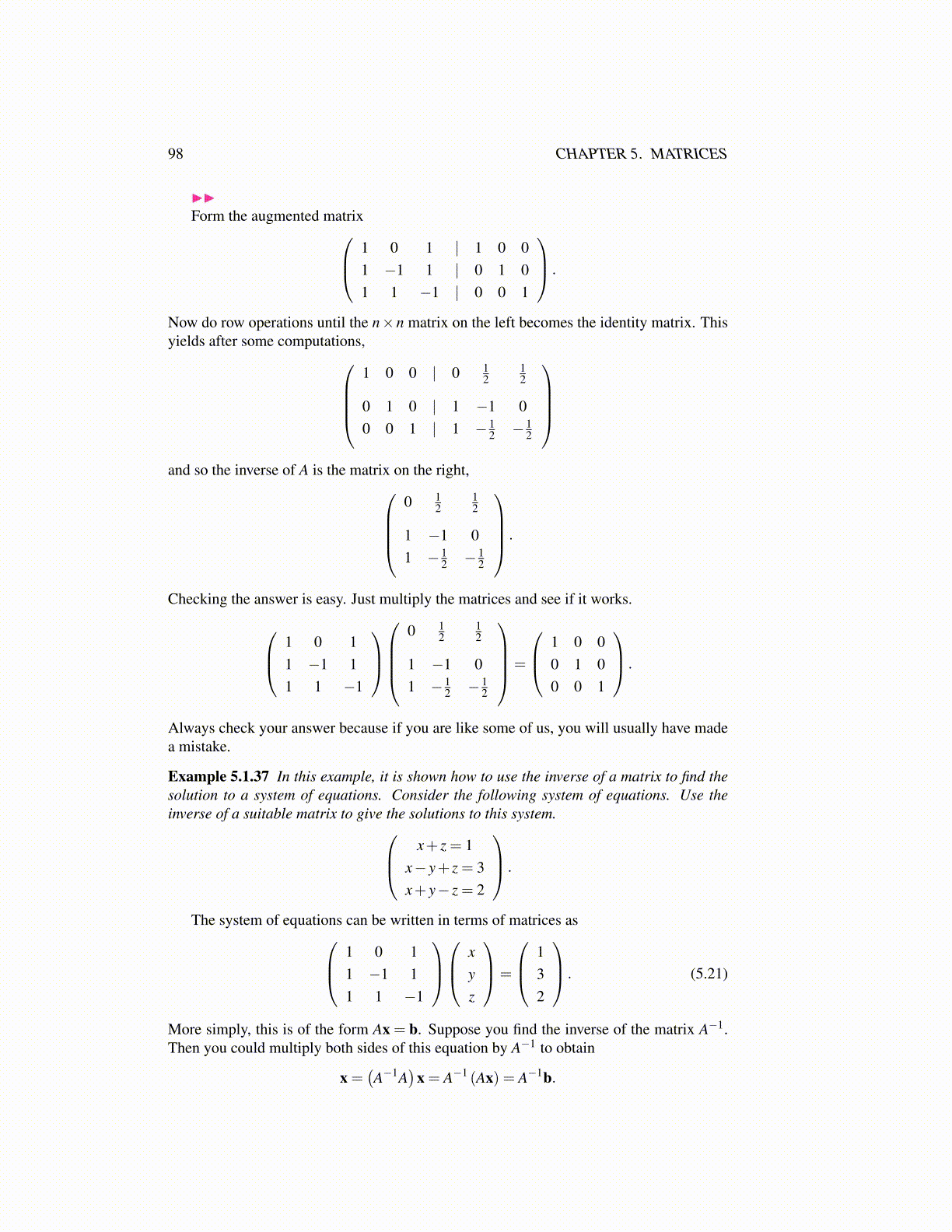
98 CHAPTER 5. MATRICES
▶▶Form the augmented matrix 1 0 1 | 1 0 0
1 −1 1 | 0 1 01 1 −1 | 0 0 1
.
Now do row operations until the n×n matrix on the left becomes the identity matrix. Thisyields after some computations,
1 0 0 | 0 12
12
0 1 0 | 1 −1 00 0 1 | 1 − 1
2 − 12
and so the inverse of A is the matrix on the right,
0 12
12
1 −1 01 − 1
2 − 12
.
Checking the answer is easy. Just multiply the matrices and see if it works.
1 0 11 −1 11 1 −1
0 12
12
1 −1 01 − 1
2 − 12
=
1 0 00 1 00 0 1
.
Always check your answer because if you are like some of us, you will usually have madea mistake.
Example 5.1.37 In this example, it is shown how to use the inverse of a matrix to find thesolution to a system of equations. Consider the following system of equations. Use theinverse of a suitable matrix to give the solutions to this system. x+ z = 1
x− y+ z = 3x+ y− z = 2
.
The system of equations can be written in terms of matrices as 1 0 11 −1 11 1 −1
x
yz
=
132
. (5.21)
More simply, this is of the form Ax = b. Suppose you find the inverse of the matrix A−1.Then you could multiply both sides of this equation by A−1 to obtain
x =(A−1A
)x = A−1 (Ax) = A−1b.